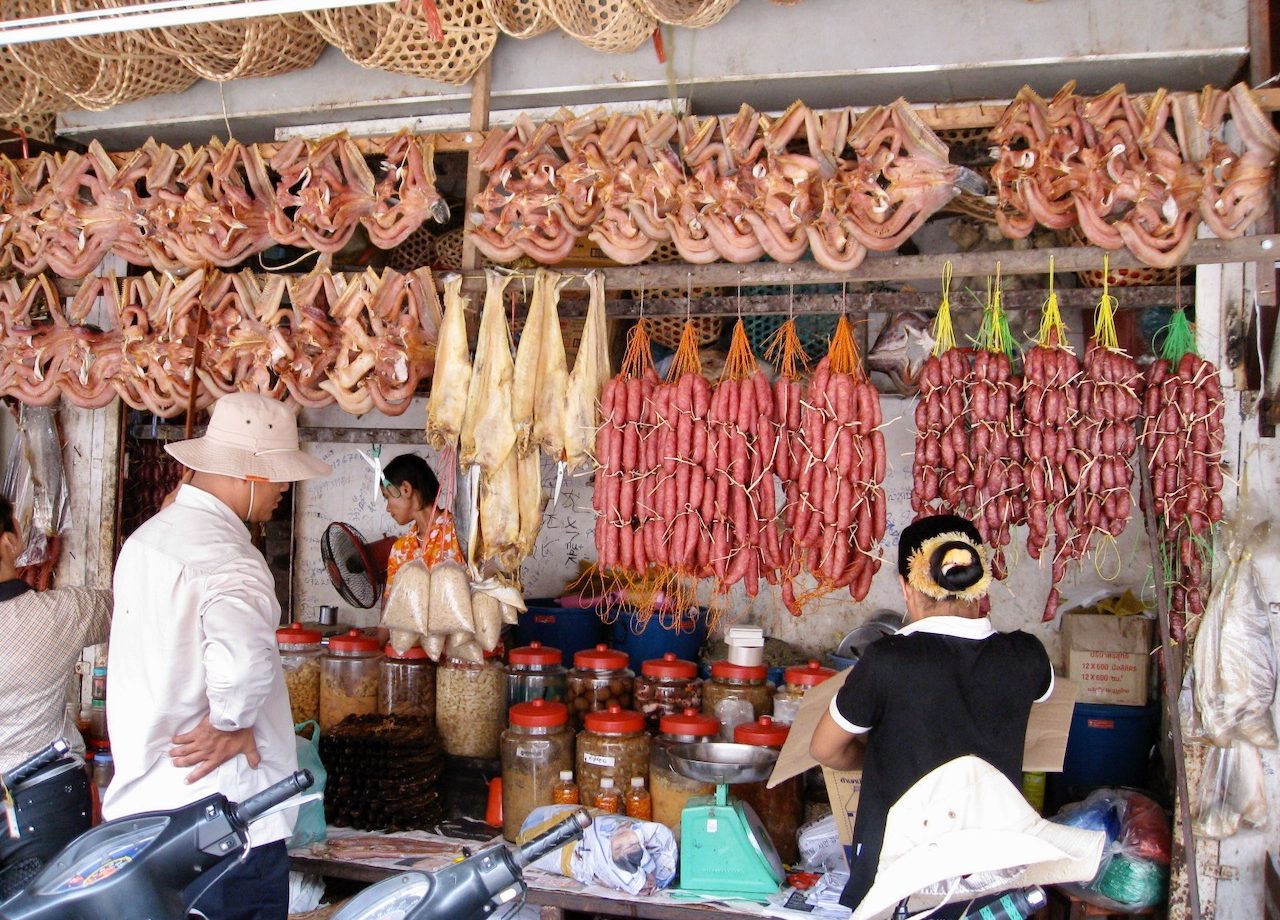Delicious curries, soups and rice dishes are first to spring to mind when thinking of Cambodian cuisine. Often described as ‘Thai without the heat’, Cambodian, or Khmer, cooking has a lot in common with its neighbouring Southeast Asian cuisines. However, there are also numerous local and strange foods in Cambodia which may form a challenge for the more conventional palate. Here are some examples of weird Cambodian foods:


Prahok
Prahok, or fermented fish paste, is a common ingredient used in many Cambodian dishes. It’s an acquired taste for most westerners, but is an essential part of the Khmer cuisine and it’s included in many dishes or used as a dipping sauce. The generous use of prahok, which adds a salty flavour to food, is a characteristic that differentiates Cambodian cuisine from its neighbours.

Fried spider
Fried spider is a regional delicacy in Cambodia. The spiders are bred in holes in the ground or foraged from nearby forests and then fried in cooking oil and sold as street food. The taste is bland with different textures; a crispy exterior and soft centre. The legs contain hardly any meat, while the head and body are made up of soft white meat. The abdomen contains a brown paste consisting of organs, possibly eggs, and excrement. Definitely not everyone’s cup of tea!

Crunchy crickets
Considered a pest in most parts of the world, the millions of crickets that swarm the plains every year are actually celebrated in Cambodia. Seen as a delicacy, the crickets are served up deep-fried, crispy and seasoned. Some Cambodians believe eating crickets regularly improves wellbeing and aids a long life.

Interested in trying Cambodian insect cuisine? Check out this food tour in Siem Reap!
Balut
A balut is a fertilized duck embryo that is boiled alive and eaten in the shell. Most Cambodians consider balut to be an aphrodisiac and a high-protein, hearty snack. It is commonly sold by street vendors and often served with beer.

Tiger penis*
The penis of a tiger is consumed in restaurants in many parts of Southeast Asia. Considered a valuable delicacy, tiger penis can be served in a soup, ground in wine or soaked in rice. Cambodians believe the dish has therapeutic properties; however, modern science does not support this belief. Additionally, the demand for tiger parts worsens the endangered status of the animal, creating a market for poachers.
* The information contained in this post is for information purposes only and does not in any way form an endorsement by Velvet Escape of the hunting and/or consumption of endangered species.
Read about my visit to Cambodia and my Angkor Wat photos.












Remind me never to go to Cambodia.
Hi,
Thanks for the clarification. I don’t condone the hunting of endangered animals for whatever purpose.
Kind regards,
Keith
The consumption of tiger parts is a serious problem for tiger conservation. However, just thought I’d point out that the penis in that photo is a fake – probably a carved bull penis. Here’s the wildlife crime enforcement guide to identifying real tiger penis: http://www.fws.gov/lab/idnotes/TigerPenisIDN6.pdf
I’m living in Cambodia and I never heard of Tiger penis consumption. Do you know which part of the country it is?
All the others are delicious!!! No I’m joking I don’t really like, except few crickets sometimes (but often it’s really oily). Anyway nice article!
Thanks Lara! I’m staying clear of that one too.
Cheers,
Keith
I’m all for trying everything once, though I’ll stop at dishes made from endangered species, such as the tiger penis. I’d be putting a disclaimer on that one, Keith! 🙂
The weird and the wonderful of Asia if cuisine. The main thing is to give it a try as you’ll never know until you give it a go (o.k, maybe not all of it) !